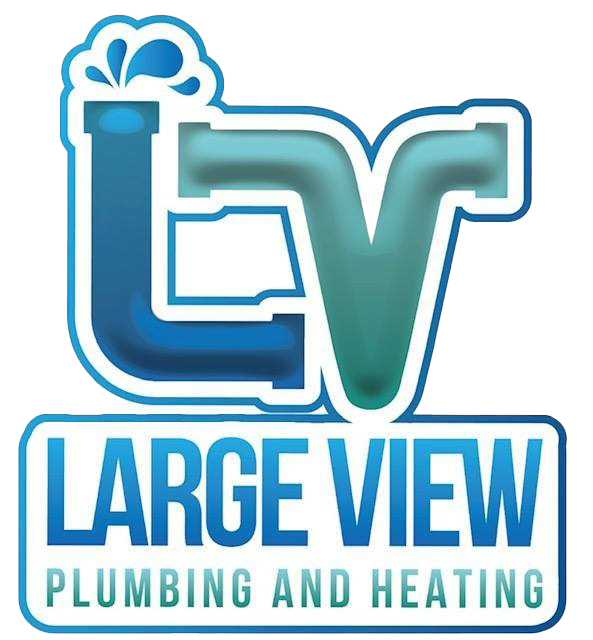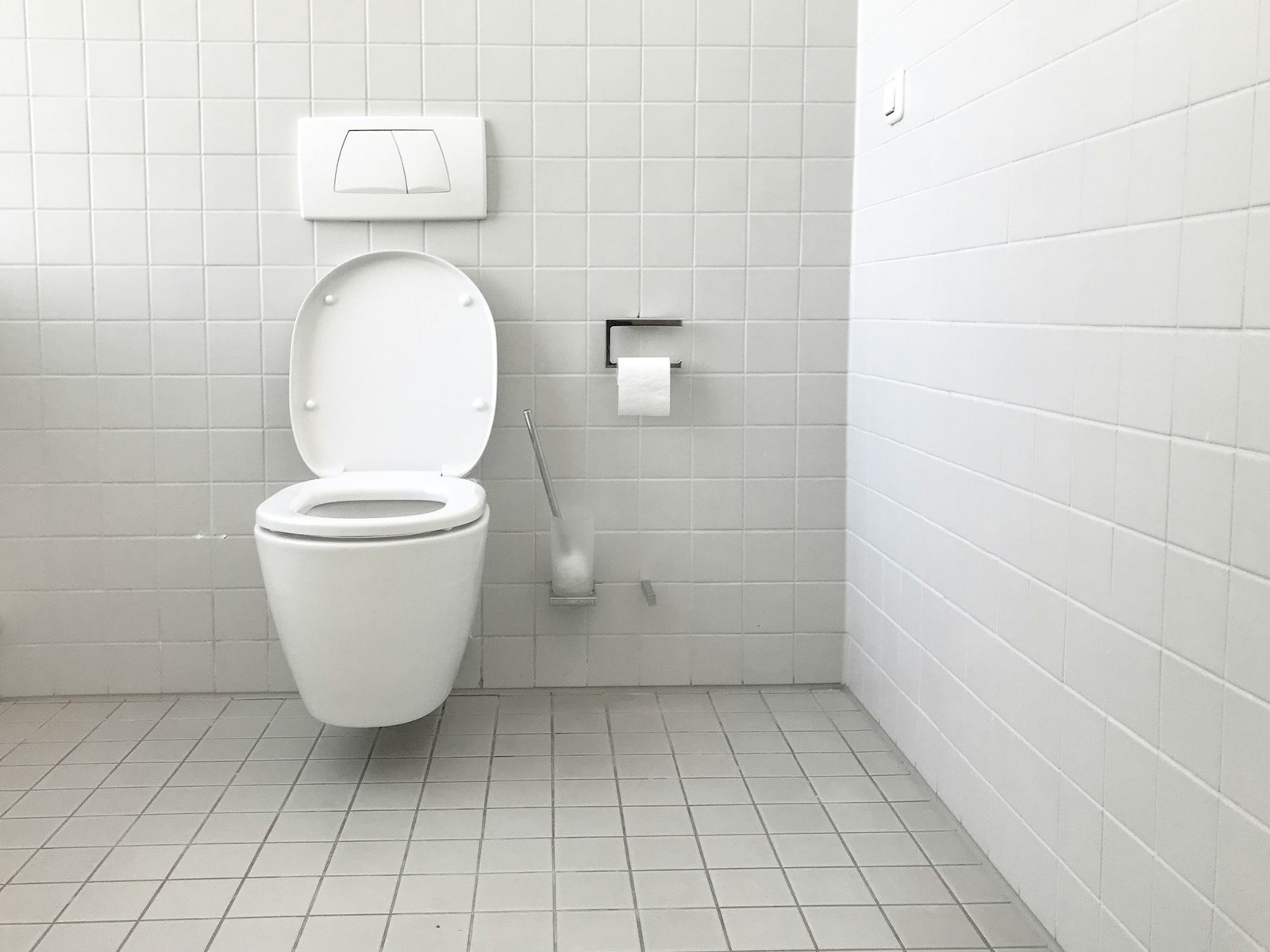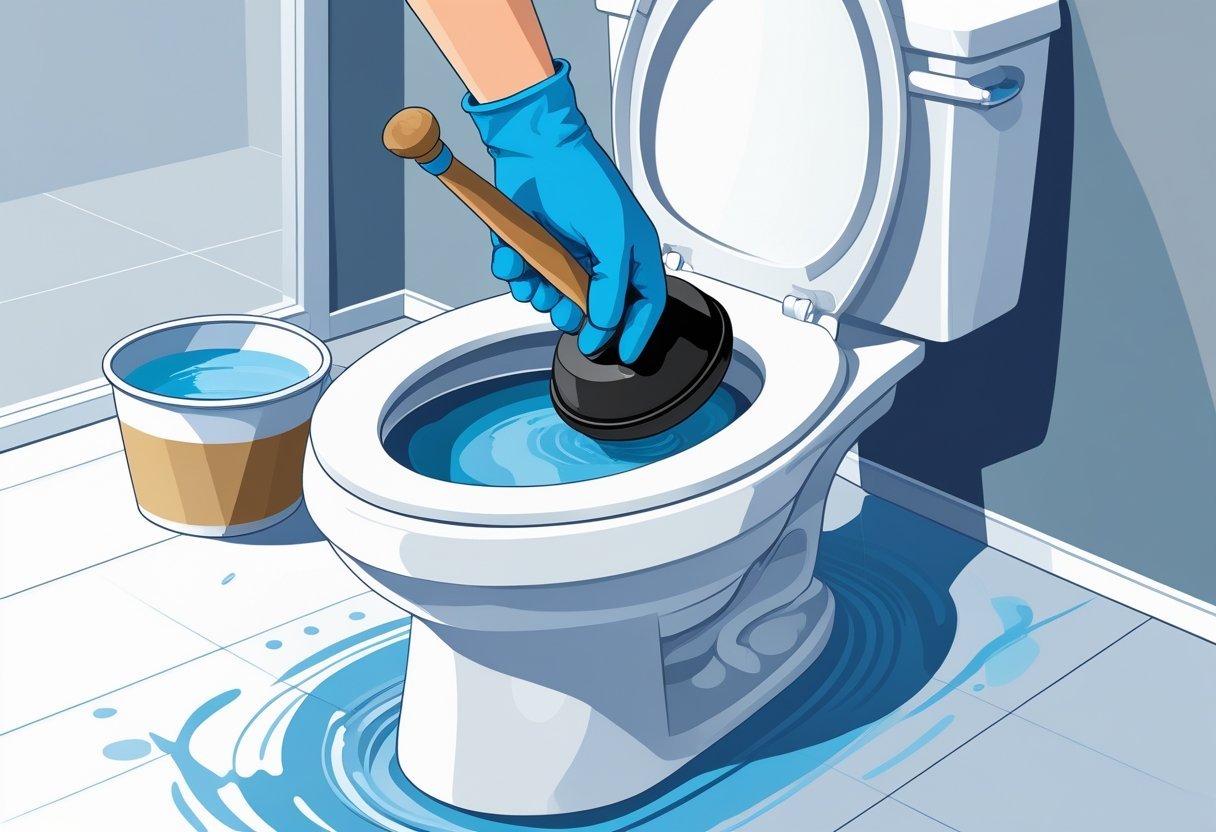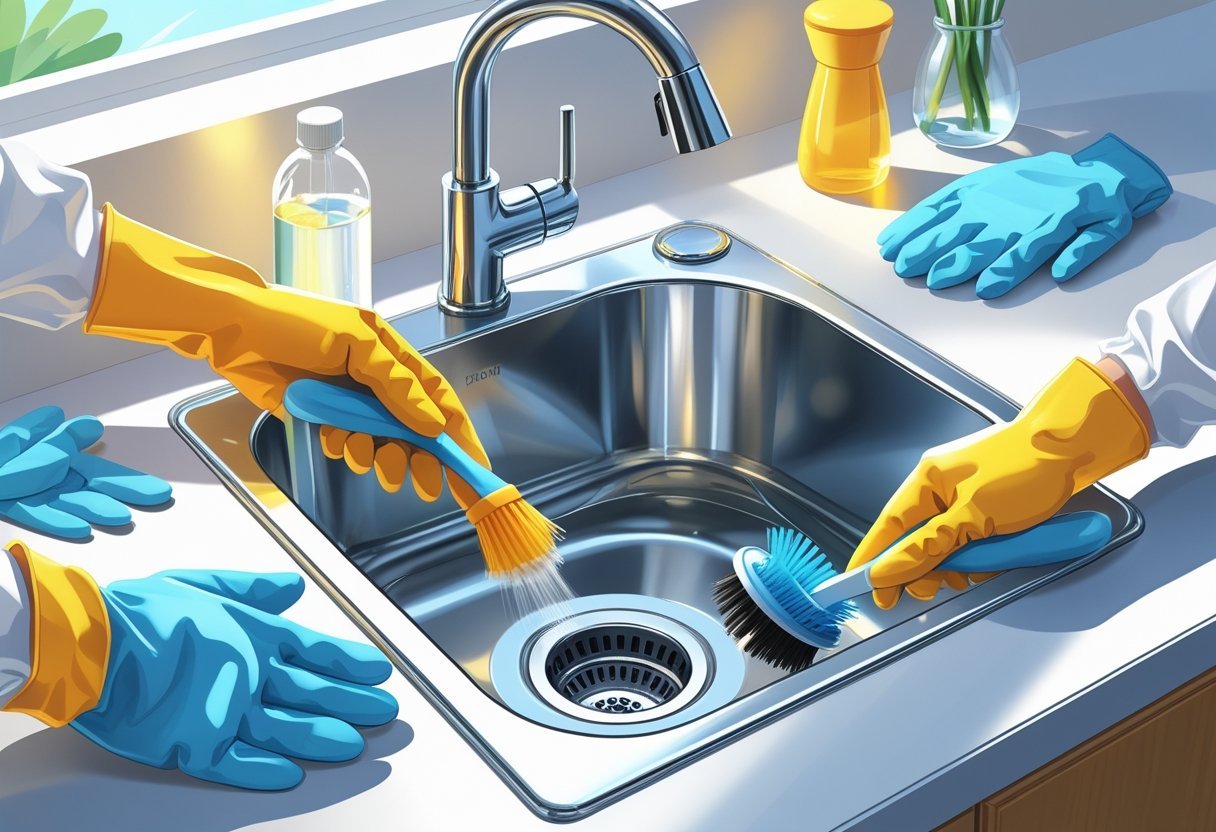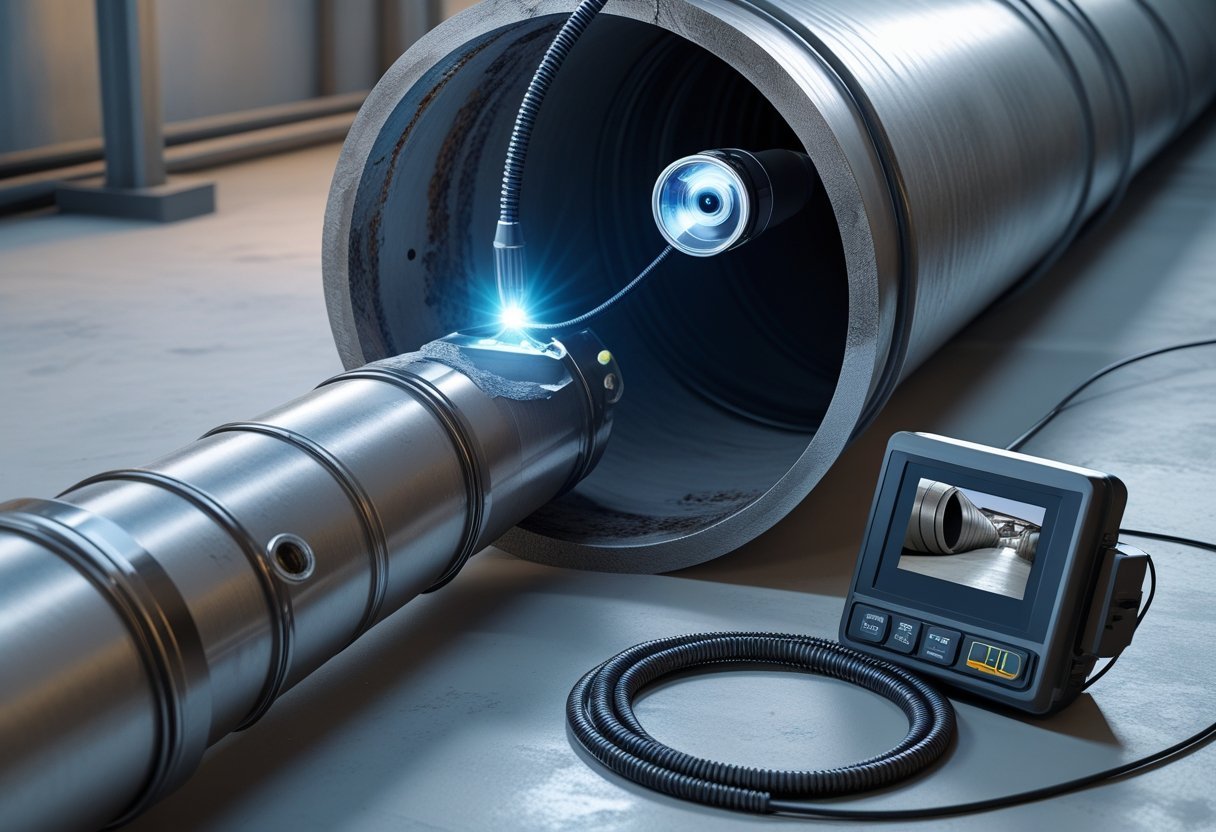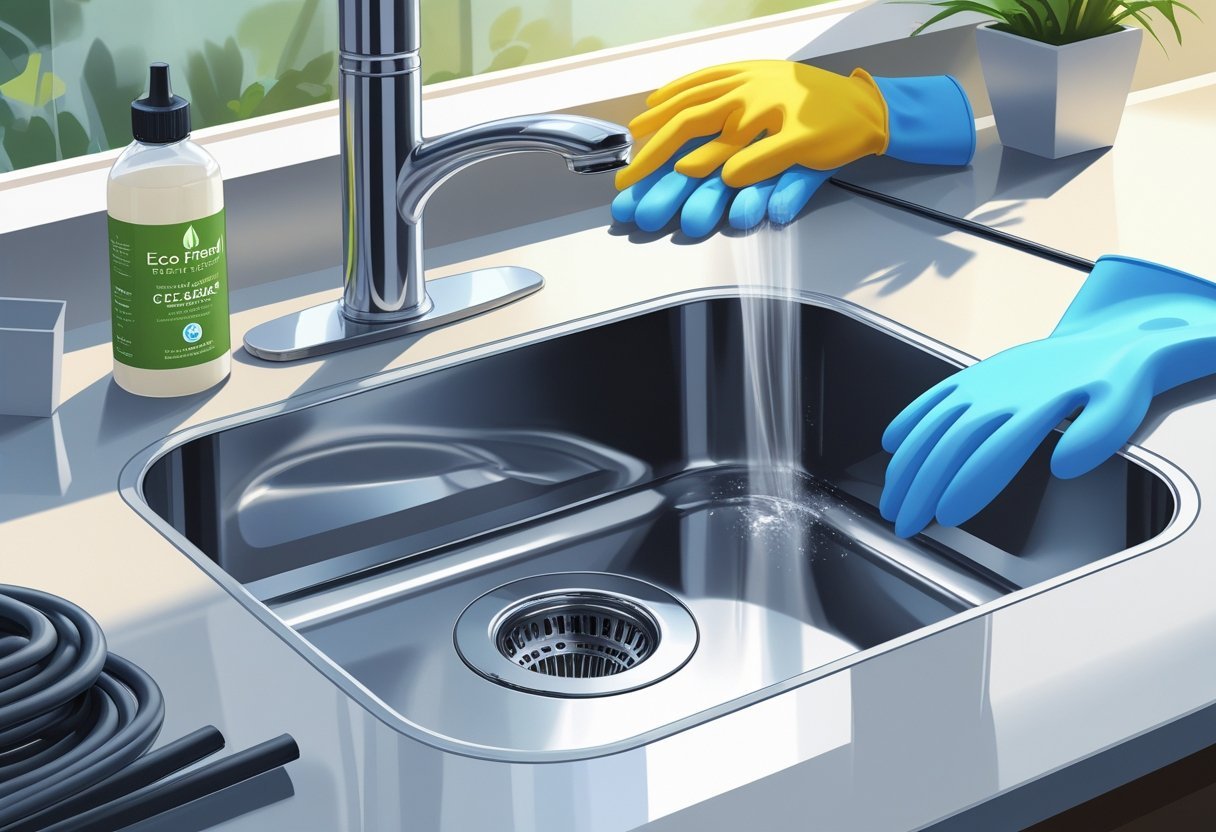Clogged drains can be frustrating and disruptive, but you don’t have to resort to expensive plumbing services immediately. You can easily unclog a drain using simple household items and techniques that yield quick results. By employing methods such as baking soda and vinegar or boiling water, you can often clear the blockage yourself without breaking a sweat.
If you find yourself facing persistent drain issues, seeking professional help can also be beneficial. Trustworthy services, like those offered by Large View Plumbing & Heating, can ensure that your plumbing problems are resolved efficiently. With over 10 years of experience in the North Shore area, their team is dedicated to maintaining your plumbing systems and addressing any unforeseen complications.
Understanding how to tackle minor clogs effectively can save you time and money. Keep reading to discover proven methods that will help you get your drains flowing freely again.
Common Causes Of Clogged Drains
Understanding the various factors that lead to clogged drains is essential for effective maintenance. This section outlines everyday obstacles, plumbing system issues, and specific signs related to the P-trap, all of which can contribute to blockages.
Everyday Factors Leading To Blockages
Several common items and practices can lead to clogged drains in your home. Hair, soap scum, and food scraps often build up in pipes, restricting water flow.
Key contributors include:
- Hair: Accumulates easily in bathroom drains, combining with soap residue to cause blockages.
- Soap scum: Forms when soap mixes with minerals in hard water, creating a sticky substance.
- Food scraps: Improper disposal down kitchen sinks can lead to significant clogs.
To prevent these issues, consider using drain covers and regularly cleaning your drains. Large View Plumbing & Heating can assist with routine maintenance to keep your drains clear.
Plumbing System Issues
Certain plumbing system problems can also lead to clogged drains. Issues such as tree root intrusion or mineral buildup from hard water can impede water flow.
Common plumbing problems include:
- Tree roots: Roots can penetrate underground pipes, causing significant blockages.
- Mineral buildup: Over time, hard water can leave deposits that narrow pipes, increasing the likelihood of clogs.
Regular inspections and updates to your plumbing system can help mitigate these issues. Partnering with a trusted team like Large View Plumbing & Heating ensures you have support for any systemic challenges.
Signs Of A Full Or Blocked P-Trap
The P-trap is a crucial component in your plumbing that can easily become clogged. This U-shaped pipe traps debris and prevents sewer gases from entering your home.
Signs of P-trap issues include:
- Slow draining: If water is taking longer than usual to drain, the P-trap may be blocked.
- Foul odors: A blocked P-trap can cause unwanted smells to enter your home.
Regularly checking and maintaining this part of your plumbing will help in avoiding more severe issues. If you suspect a problem, contacting professionals can provide peace of mind and effective solutions.
Essential Tools And Safety Precautions
When tackling a clogged drain, having the right tools on hand and following essential safety precautions can make the process smoother and more effective. Below are key tools you should consider and how to use them correctly.
Selecting The Right Plunger
Using a plunger is often the first step in unclogging a drain. There are mainly two types: the cup plunger and the flange plunger.
- Cup Plunger: Ideal for sinks and tubs. Ensure that there’s enough water to cover the cup.
- Flange Plunger: Best for toilets due to its extended flange that fits into the toilet’s drain.
To use correctly, create a strong seal over the drain. Push down slowly and then pull up sharply to create suction. Repeat this several times to dislodge whatever is causing the blockage.
Remember, always maintain a firm grip and be cautious to ensure you don’t spill any dirty water. If you continue to face issues, consulting a professional like Large View Plumbing & Heating may be the best option.
Using A Drain Snake Effectively
A drain snake can be a very effective tool for removing clogs that are deeper in the plumbing system. It works through a flexible metal coil that you insert into the drain.
- Choose the Right Snake: For household use, a 25-foot snake is typically sufficient.
- Insert with Care: Gently push the snake into the drain until you feel resistance.
Rotate the handle to break up the clog. Slowly pull the snake back out, ensuring any debris clings to it. Proper maintenance of the snake, including drying it after use and storing it away, can extend its life.
For persistent clogs, contacting experts such as Large View Plumbing & Heating can ensure proper resolution without risking damage to your plumbing.
When To Use A Shop Vac
A shop vac is another versatile tool that can be used for unclogging drains effectively, especially when there is visible debris blocking the entry.
- Setup: Make sure to switch the vacuum to liquid mode if it has that option.
- Seal Properly: Cover the area around the drain with towels to prevent splashing.
Position the nozzle over the drain, creating a tight seal. Turn on the shop vac to suck out the clog. Always keep safety goggles on to protect your eyes from any flying debris.
In cases where you’re unsure, relying on professionals like Large View Plumbing & Heating ensures that the problem is dealt with appropriately and safely.
Step-By-Step Methods For Unclogging Drains
Clogged drains can be a real hassle, but there are effective methods to address this issue. The following techniques provide practical steps for clearing those pesky blockages, whether through flushing, manual intervention, or chemical solutions.
Hot Water Flush Technique
One of the simplest ways to tackle a clog is the hot water flush technique. Start by boiling a pot of water and carefully pouring it down the drain in stages. Allow the water to work for a few minutes before adding more.
This process can help dissolve soap scum and grease build-up, making it easier for them to flow through the pipes. For severe clogs, you might consider using a combination of boiling water and baking soda or vinegar for added effectiveness. Be cautious not to use boiling water on PVC pipes, as it can cause damage.
Manual Removal And P-Trap Cleaning
For more stubborn clogs, manual removal may be necessary. Begin by locating the P-trap under your sink. This curved pipe can collect hair, food particles, and debris over time.
To clean it, place a bucket underneath to catch any water and unscrew the P-trap. Clear out any visible blockages and rinse the trap thoroughly before reassembling it. If you’re uncomfortable doing this yourself, consider reaching out to professionals like Large View Plumbing & Heating for assistance. They have the expertise and can ensure that the job is done correctly.
Chemicals Like Drano: Pros And Cons
Using chemical drain cleaners like Drano can be tempting given their convenience. These products work quickly, breaking down clogs using potent chemicals.
However, they come with significant risks. They can damage your pipes if used excessively and pose safety hazards if spilled. It’s essential to follow the manufacturer’s instructions carefully. If you decide to use a chemical solution, ensure proper ventilation and wear protective gear. Large View Plumbing & Heating recommends using these products sparingly. Always consider environmental-friendly alternatives like baking soda and vinegar first.
Advanced Drain Cleaning Techniques
When traditional methods fail to clear stubborn blockages, advanced techniques can be your best option. Two effective methods include using drain bladders for high-pressure cleaning and employing a drain snake specifically designed for main lines. Each approach tackles unique challenges in drain cleaning.
Clearing Stubborn Clogs With Drain Bladders
Drain bladders are inflatable devices that allow for powerful, targeted cleaning of pipes. When inserted into a drain, the bladder expands, creating a blockage against the pipe wall.
Next, pressurized water is released, pushing against the clog. This method is effective for dislodging roots, grease, and other persistent blockages.
Steps to use a drain bladder:
- Choose the correct size for your pipe.
- Insert it into the drain.
- Connect to a water source and inflate.
- Start the water flow.
Using a drain bladder can often eliminate the need for a professional visit. However, for optimal results and safety, consider consulting with experts like Large View Plumbing & Heating, given their extensive experience in drain cleaning.
Using A Drain Snake On Main Lines
A drain snake, also known as a plumbing auger, is an essential tool for clearing deeper blockages located in main lines. This flexible auger can navigate bends in the pipes, reaching blockages that may not be accessible with basic tools.
To effectively use a drain snake:
- Insert the snake into the drain until you reach resistance.
- Rotate the handle to penetrate the clog.
- Pull back gently to remove debris or push it through.
You can tackle many stubborn blockages using this method alone. If you encounter particularly challenging issues, consult with Large View Plumbing & Heating for professional assistance and ensure proper handling of your plumbing systems.
Special Considerations For Different Drain Types
Different types of drains can present unique challenges when it comes to unclogging. Understanding the specific considerations helps you address blockages effectively, whether in a kitchen sink or bathroom drain.
Unclogging A Kitchen Sink
When clearing a kitchen sink, grease and food particles are the most common culprits. Begin by removing any visible debris from the drain. Then, consider using hot water and dish soap to dissolve stubborn grease. Periodically flushing the drain can prevent future clogs.
For more stubborn blockages, you might use a baking soda and vinegar mixture. Pour a half-cup of baking soda followed by a half-cup of vinegar. Let it sit for an hour, then flush with hot water. If these methods fail, a plunger or manual drain snake can help break up tough clogs. Large View Plumbing & Heating can assist if you encounter persistent issues.
Bathroom Drains And Tub Drains
Bathroom drains typically face blockages from hair and soap residue. Start by removing the drain cover and clearing any hair or debris that’s accessible. After that, hot water mixed with dish soap can aid in breaking down soap scum.
For stubborn blockages, use the baking soda and vinegar method, similar to kitchen sinks. Allow the mixture to sit before flushing with hot water. If the clog persists, a plunger can create enough pressure to dislodge buildup.
For more serious obstructions, it may be wise to consult with professionals like Large View Plumbing & Heating. Their expertise ensures a thorough assessment and resolution of the problem.
What To Do When DIY Solutions Fail
Sometimes DIY methods won’t resolve stubborn clogs. Recognizing whether the issue is more serious or knowing when to call a professional can prevent further damage.
Recognizing Pipe Breaks
If you notice persistent leaks or sewer smells, these could indicate pipe breaks. Look for signs like wet patches on the floor, bulging walls, or an increase in your water bill.
Using a professional camera inspection can accurately identify breaks or clogs. If found, contact a plumbing expert immediately. A quick response helps minimize damage to your home. Large View Plumbing & Heating can provide thorough inspections and rapid solutions, ensuring your pipes are restored.
Ignoring signs of a broken pipe can lead to complications like structural damage or mold growth. In areas prone to harsh weather, such conditions can worsen, making it critical to act swiftly. Don’t wait for the problem to escalate.
When To Call A Professional Plumber
If your DIY attempts to clear the drain have failed, it’s time to consult a professional. Common indicators include repeated clogs, unusual noises from the pipes, or if you’re unsure about the extent of the issue.
Professionals like Large View Plumbing & Heating can offer solutions that DIY methods can’t. They utilize advanced equipment to avoid unnecessary damage to your property.
When selecting a plumber, verify their qualifications and customer reviews. Certified technicians come prepared with the necessary tools and expertise to tackle complex plumbing issues effectively. Don’t hesitate to seek help; timely intervention can save you both time and money in the long run.
Frequently Asked Questions
When facing a clogged drain, many common concerns arise. The following information addresses specific inquiries about effective methods for unclogging drains, including the safety and efficacy of various solutions.
What can I pour down my drain to unclog it?
Commonly recommended substances include boiling water, which helps dissolve grease and soap buildup. You can also use a mixture of vinegar and baking soda for a natural approach. These methods can be particularly effective for minor clogs.
What is the most effective drain cleaner for hair blockages?
Enzymatic cleaners are often the most effective for hair blockages. They contain bacteria or enzymes that break down hair and organic matter. Alternatively, chemical drain cleaners can be used, but should be approached with caution due to potential damage to pipes.
How do you clear a severe drain clog deep within the pipes?
For severe clogs, a plumbing snake or auger may be necessary to physically remove the blockage. In some cases, high-pressure water jets can also clear stubborn clogs deep within the pipes, restoring proper drainage.
Is it safe to unclog a drain with a vinegar and baking soda mixture?
Yes, using a vinegar and baking soda mixture is generally safe for most drains. This combination creates a fizzing reaction that helps dislodge minor clogs without risking damage to your pipes.
What are the steps to unclog a shower drain without professional help?
Start by removing any visible debris from the drain. Then, pour boiling water down the drain followed by a mixture of vinegar and baking soda. Allow it to sit for at least 30 minutes and then flush with more boiling water.
How can I quickly clear a sink drain clog using household items?
To quickly clear a sink drain, use a mixture of baking soda followed by vinegar. Allow it to sit for a few minutes and then flush with hot water. For tougher clogs, a plunger can also help create the suction needed to remove blockages.
If you find yourself needing assistance, consider contacting Large View Plumbing & Heating for expert guidance in North Shore, Massachusetts. Their team can provide reliable solutions for all plumbing issues.
